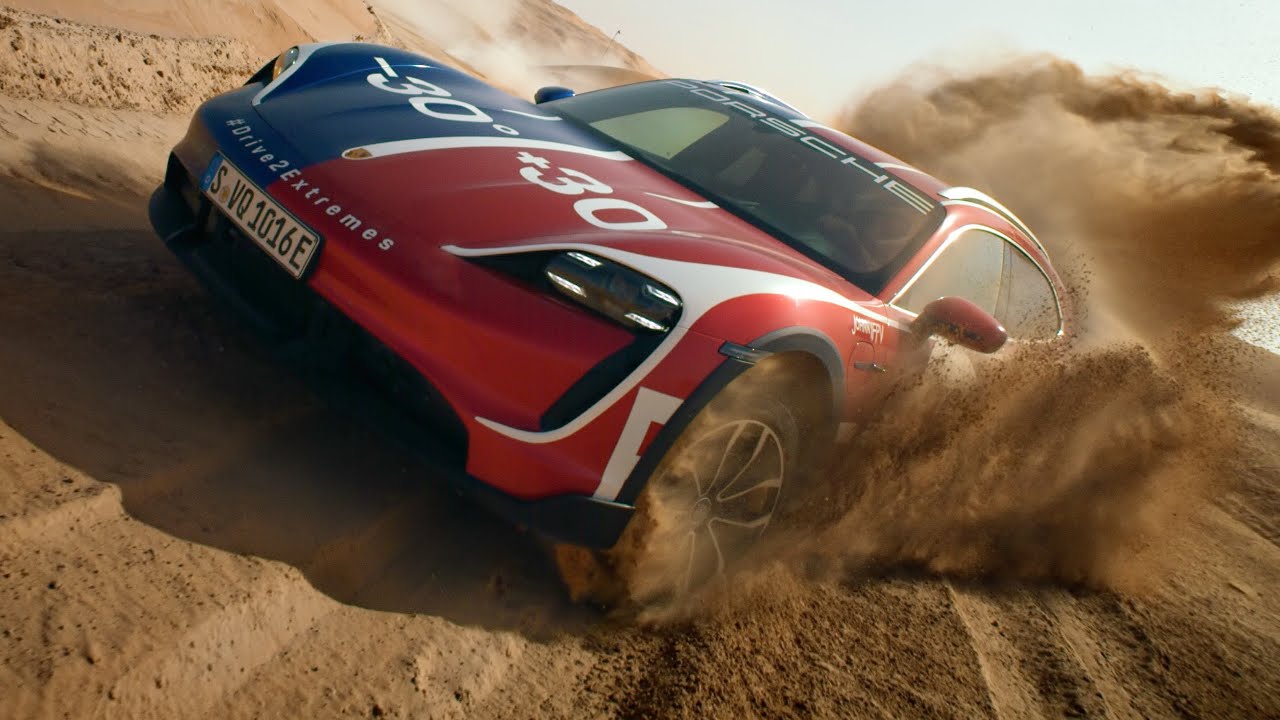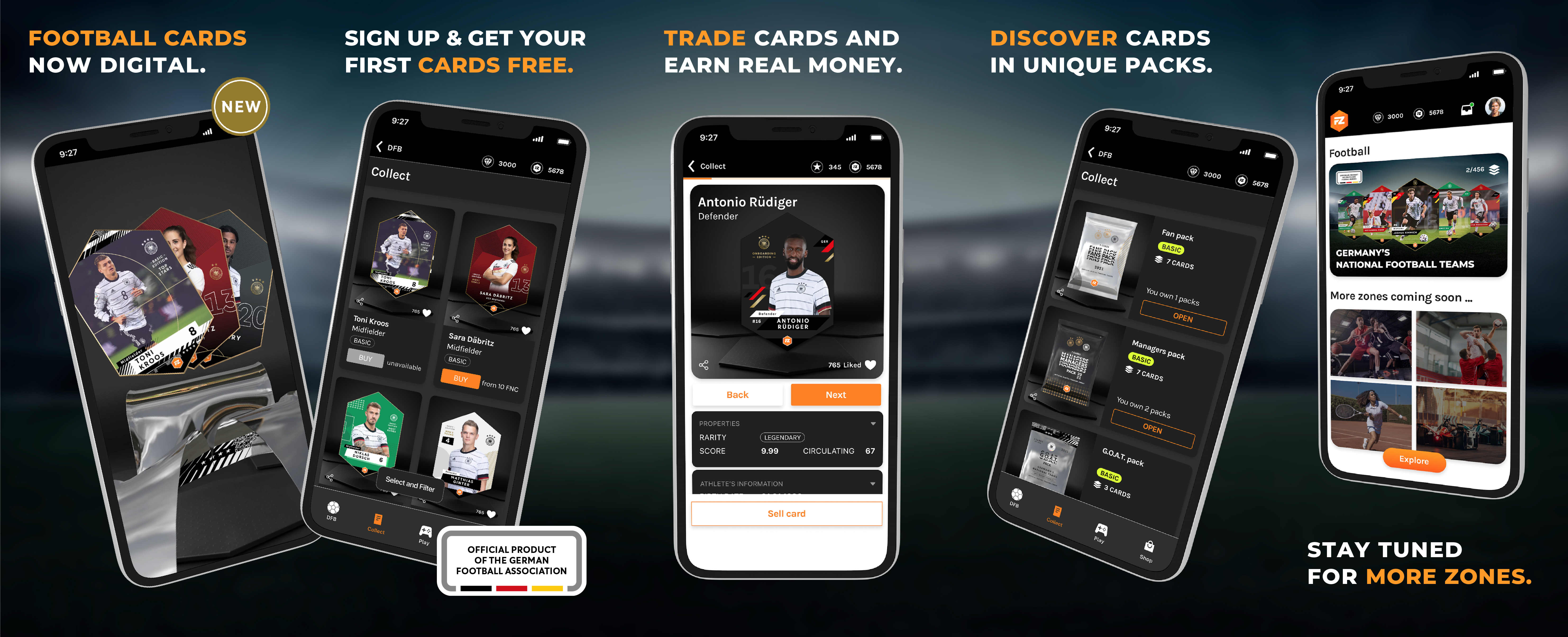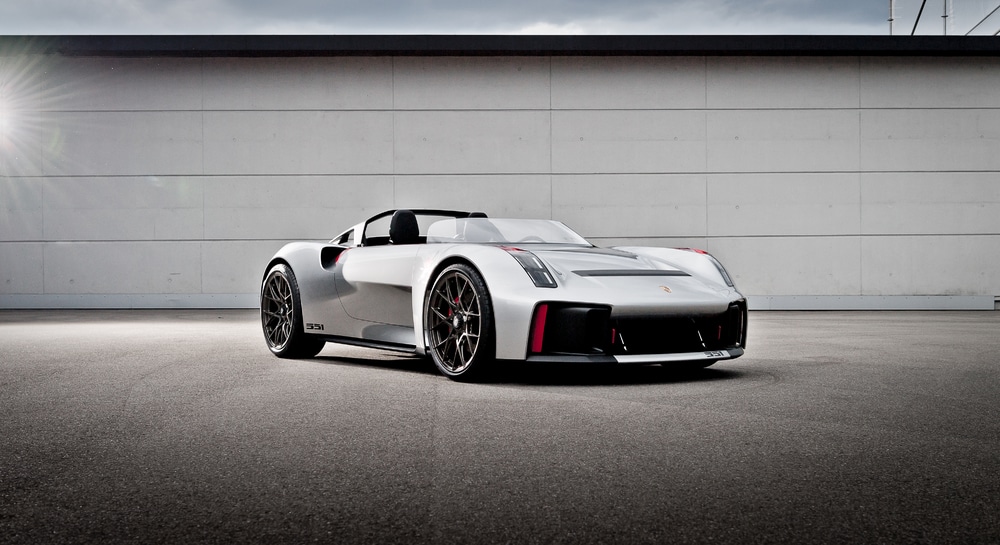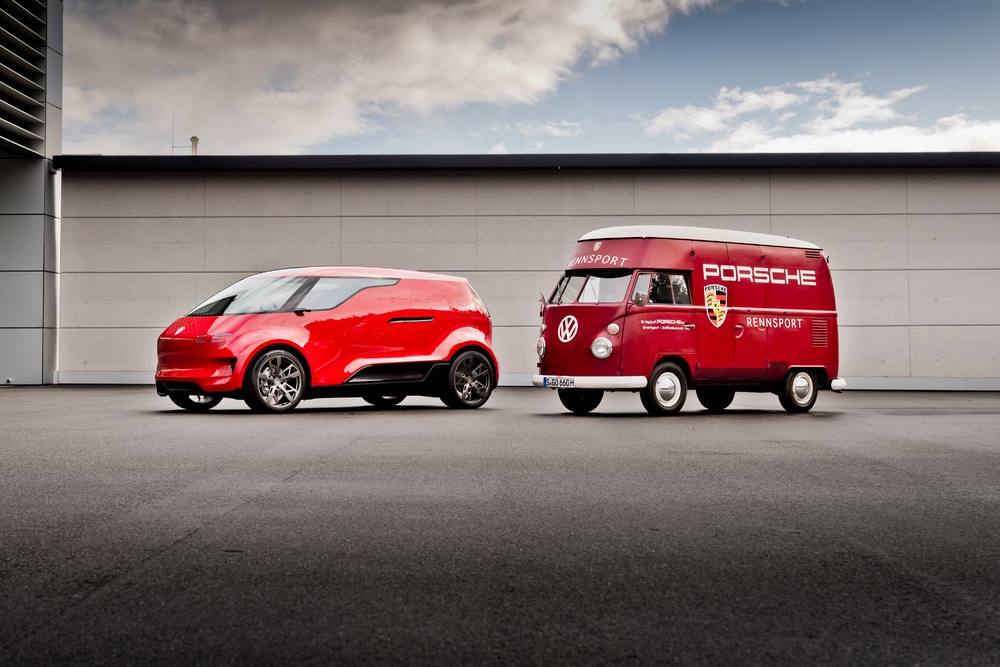A hot-air balloon glides over seemingly endless forests of pine. A sports car is drifting in the snow. Between the two, a drone slices through the air, before it swoops down dramatically and captures the car at breakneck speed. A winter landscape? The eye can scarcely apprehend how the flight manuever suddenly transitions to a desert. The music underscores the dynamic acts of cinematography and driving like a symphony of contrasts. The locations provide the extremes in this action film: snow in Finland, desert sands in the United Arab Emirates. The protagonist is the Porsche Taycan Turbo Cross Turismo.
“It’s important to fly in a unique way, to establish a trademark style.”Johnny FPV
The second hero is somewhat in the background. Johnny FPV has both feet on the frozen ground, about 60 miles north of the Arctic Circle, as he works his magic from the bird’s-eye view above. One of the best drone pilots in the world, he is wearing black video glasses and holding a controller. Gloves protect his hands from the icy air – the filmmaker’s biggest challenge today, as he films against the stunning backdrop of the Porsche Driving Area – a closed course with prepared ice tracks.

Born Johnny Schaer, the three initials in his professional handle stand for “first-person view” – the camera perspective of the films that have turned his passion into a career. Thanks to instantaneous transmission speeds, the drone pilot sees the world through the eye of his camera. Later, the viewer experiences the spectacular flights with sensory directness. The 25-year-old from Chicago loves speed, cars and flying, and is known for exceptionally dexterous maneuvers. Few can match his skill in making the viewer a part of the action. He opens up new horizons, offering surprising dimensions in technical perfection. Watching him and his drone at work, one senses how the virtual and real worlds meld into one.
The film – Drive2Extremes. Taycan Cross Turismo x Johnny FPV – is set in the Lapland town of Levi and the Liwa Oasis on the northern edge of the Rub al Khali desert. More than 3,100 miles as the crow flies and roughly 1400 degrees Fahrenheit separate the two filming locations but in both places the Taycan Turbo Cross Turismo, the first all-electric Cross Utility Vehicle (CUV) from Porsche, conquers identically set courses. The aerial precision of the drone pilot is what allows the gripping splicing of the shots between ice and desert. The film was directed by Los Angeles-based Nicholas Schrunk, who won an Emmy for the documentary Blood Road. He’s a master of the craft of accentuating emotional stories with spectacular stunts.
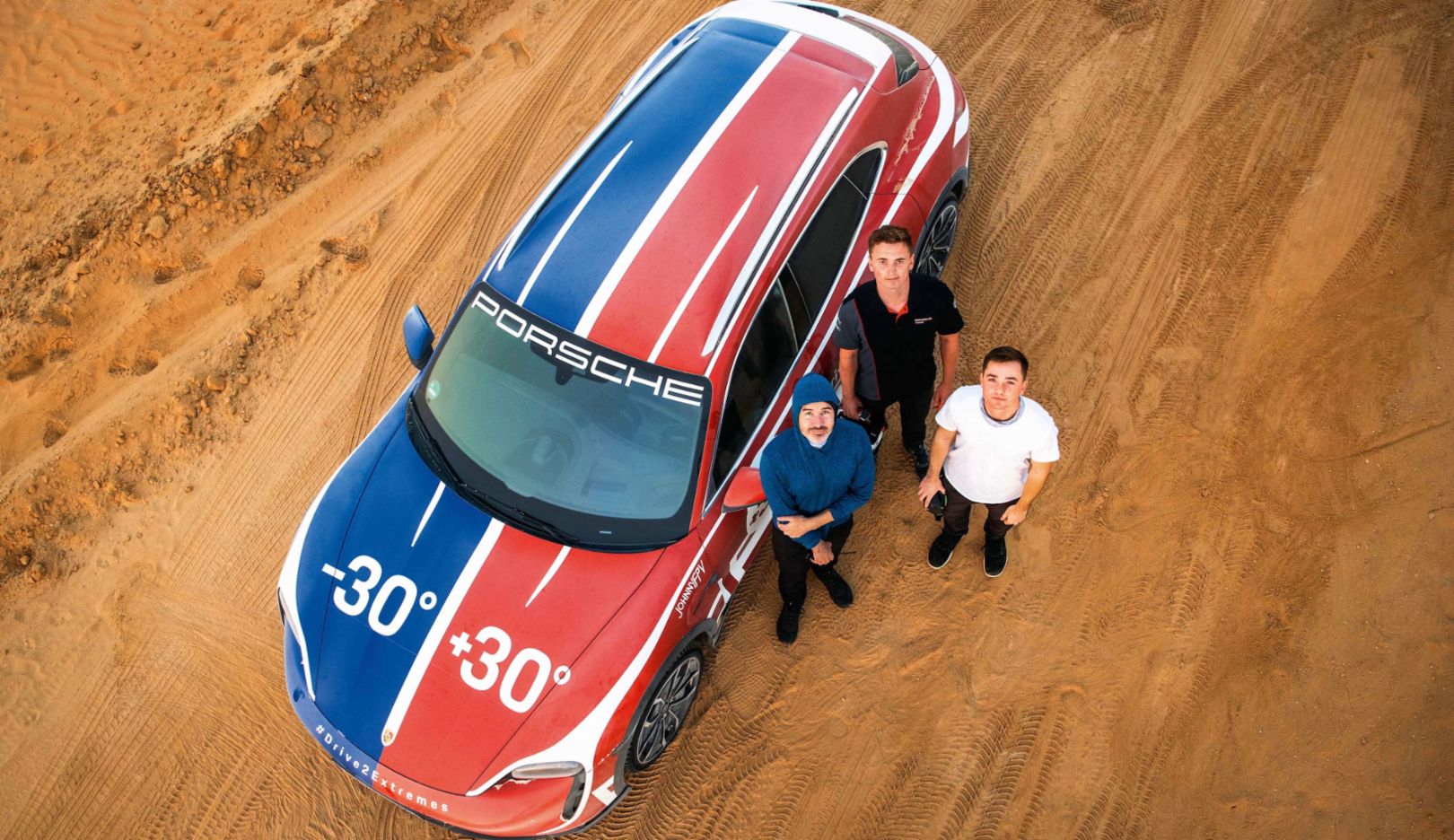
Schaer bought his first drone at the age of 15, followed days later by a second, and shortly thereafter by a third. He practiced relentlessly. He got good. And then he became a pro. “Hand-eye coordination is crucial to being a good pilot. Otherwise it’s just a mix of hard work, good ideas and talent,” he says. In Drive2Extremes, the shots are dynamic in multiple ways. The car moves forward – the drone in all directions. Schaer has developed his own style and it is one that captivates the viewer. “It’s important to fly in a unique way, to establish a trademark style. My videos bear my signature. They’re not jerky, they’re precise and they’re very fluid.”
In just seven years, he’s ascended into the upper echelons of FPV pilots. “It’s indescribable to see and feel how strongly the Taycan Turbo Cross Turismo performs on different surfaces. I knew that electric cars accelerate very quickly, but the fact that the power can be called up like that on ice and sand is something I find incredible.” For him, electric cars are the future. “I’m quite sure I’ll own one too,” says Schaer. With his film, one ‘wow’ moment follows another, punctuated by breathtakingly beautiful slow-motion sequences. The Cross Turismo and its filmmaker – two masters in two different worlds.



